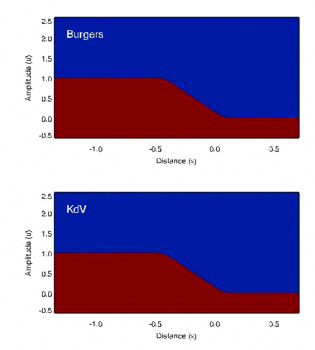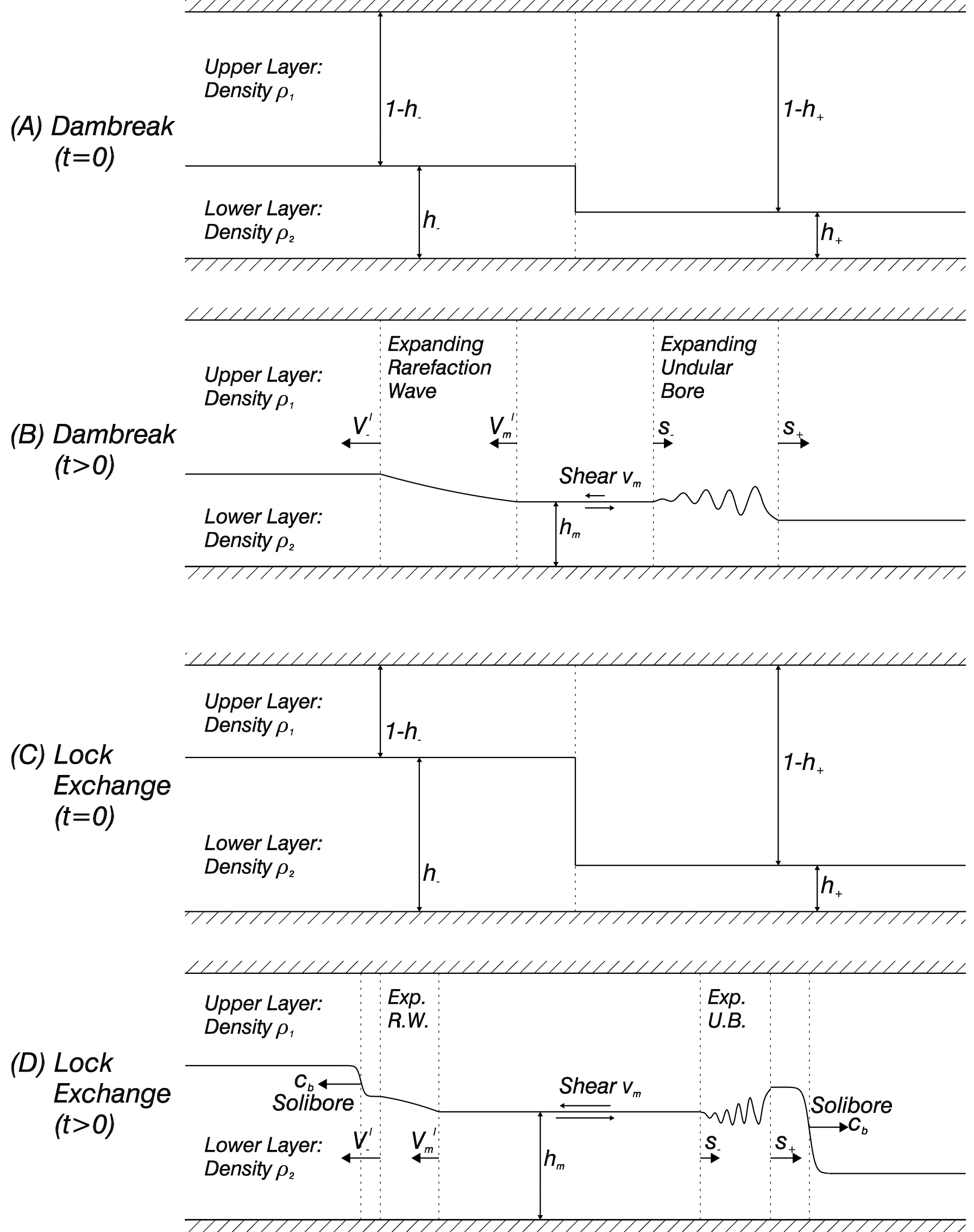A topic of recent research concerns how shocks are resolved in dispersive (as opposed to dissipative) systems. Classic model equations for dissipative versus dispersive systems are Burger's equation and the Korteweg-de Vries equation respectively. The animations below show solutions of these equations, illustrating that whereas a dissipative shock is resolved as an isolated (near) discontinuity (top), a dispersive shock takes the form of an undular bore, or spreading nonlinear wave-train (bottom).

Our interest in this topic is motivated by applications in geophysical fluid dynamics. Specifically, we have studied the two layer shallow water model, with the leading-order dispersive terms retained. The dam-break problem for this model is interesting because the system contains an addition wave, the solibore (or localised dissipationless shock). Our work shows how localised initial conditions lead to either `dam-break' or 'lock-exchange' flows, with solibores being generated in the latter case. The schematic below sketches the two types of behaviour.
